They’re here! Millennials — people born between 1981 and 1996, as defined by Pew Research Center — are no longer lurking below the horizon as a purchasing-power superstar group consumer packaged goods (CPG) companies have been trying to decode. Dawn is over, and the Era of Millennials shines brightly.
Nearly all Millennials at this point have moved into full-blown adulthood: leaving college, or their parents’ homes and apartments, buying houses, having children (in some cases) and looking to cook meals at home when they aren’t experiencing meals out on the town. Additionally, their likes and follows (aka demands) are influencing society as a whole, regardless of generation, says Steve Stouffer, president of Tyson Fresh Meats, the Dakota Dunes, S.D.-based, fresh beef and pork division of Tyson Foods.
“The question that consumers continue to ask is, ‘Where is my food coming from?’” he explains. “Whether it’s driven specifically by Millennials or not, all generations have had some degree of social [awareness] reform, particularly centered around sustainability — it’s now a general trend.”
Indeed, the meat and poultry industries have been well aware of this day coming. Tyson Fresh Meats, for its part, has been tailoring its approach to product development, business strategies and corporate culture in preparation. On the consumer side of the equation, Millennials create a new type of puzzle for processors to solve. They demand quick-and-easy convenience, social responsibility and sustainability, all wrapped in a culinary experience. However, Millennials are, in most cases, the most under-educated on and distanced from the agricultural locations and processes that supply their food, says Keith Culver, senior vice president, Sales and Marketing.
Get more of the story...
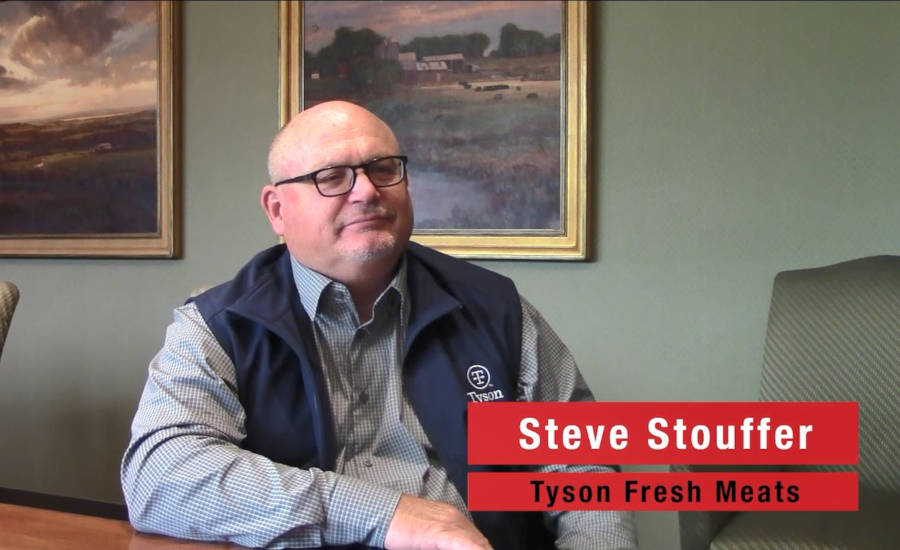
The National Provisioner sat down with Steve Stouffer, president of Tyson Fresh Meats (pictured), to discuss how the company has made adjustments to its corporate culture to meet the needs of its Millennial workforce.
“Combine that with the digital age and speed of information today, and they’re looking to fill that void and know where food comes from — and that it’s done right,” he says. “They want transparency and a story behind food, so they feel good about what they buy.”
The most challenging piece of the puzzle for some in the industry to make fit could be the demand for increased transparency; Tyson Fresh Meats, for its part, has made changes to its approach to satiate that need, Stouffer explains.
“The old way of being a good corporate citizen and supporting the community, then putting your head down, working hard and not telling anybody about it is over,” he adds. “We’ve got to do a better job letting people know what we do here; we’re people doing the right things all the time, to safely feed the world and provide opportunities for local, independent farmers to raise their families.”
Tyson Fresh Meats has shifted its efforts to better communicate its longstanding focus on the communities in which it operates as well as the opportunities it gives its employees to participate in philanthropic ventures. As part of the company’s executive training program, Tyson Fresh Meats encourages employees to spend time giving back to local communities and getting involved on local community boards and committees. The company also has been sharing more messaging around its dedication to local agriculture communities.
“We are the largest buyer of livestock from independent farmers, because we want to keep them viable and sustainable,” Stouffer says. “They are the best at raising livestock and farming, and the most sustainable option because they are passing that land from one generation to the next.”
Although this supply strategy for Tyson Fresh Meats is nothing new, the company has turned up the volume and frequency of the message in order to overcome the blitz of misinformation being fed to consumers.
“The reality is, there are factions out there that claim we are not a sustainable industry very loudly to detract from our business — when in fact, we actually are sustainable,” Stouffer says. Kevin Hueser, senior vice president, Beef Margin Management, believes many Millennial and Gen Z farmers are ready to take the virtual podium and help speak the truth.
“The Baby Boomer farmers and prior were all about managing their business and keeping to themselves — that what happened at their farm wasn’t anything anyone needed to know,” he says. “We’re seeing the younger generations want to get more involved in explaining what they do — they want us to bring the customers in and show them what they do and how well they do it compared to others, so they can add value to their operation.”
The timing on this enhanced willingness to “open the barn doors” couldn’t be better for Tyson Fresh Meats. Customers want to know more, because their consumers want the same. In fact, many retailers and foodservice buyers make no secret that a company’s sustainability record ranks highly to them, says Todd Neff, senior vice president, Pork.
“It’s not just about meeting the trim, packaging, specification, color and shelf life attributes to satisfy customers anymore,” he says. “Many customers today have their chief sustainability officer in the room and want to know what you are doing for the environment and animal well-being, or about antibiotic use on the animals, or if your hogs and cattle are fed GMO grains.”
Additional transparency, continuous education and a great storyline might convince some consumers, but today, many customers need a means by which to verify the information you provide, says Stouffer.
“We are challenged all the time by people saying, ‘We know you do a good job, but how do we verify that?’” he says. “That’s where the auditing comes in, and we have a third-party independent program, Progressive Beef, that we licensed and want to be the industry standard best practices on how to raise cattle in a feedlot production model.”
It is noteworthy that Tyson Fresh Meats licensed the Progressive Beef program and did not purchase it outright. The intent, the company says, is that it will gain industry-wide acceptance and help consumers recognize it as the benchmark. In fact, at presstime, the Progressive Beef program had received recognition from the U.S. Global Sustainable Roundtable for Beef for “demonstrating successful alignment with the industry’s sustainability framework,” according to the news release. As for Tyson Fresh Meats’ commitment to the program, Culver relays that 48 yards currently are certified or in the process of becoming certified, and in 2020, there will be more than 3 million head marketed.
“It takes a considerable amount of time — up to a year — to get certified under Progressive Beef, and it’s based on three pillars: animal care, food safety and sustainability,” he says. The main attraction of the auditing program to the younger generation may be the access it gives to copious amounts of data and analysis about the animal’s time and treatment during its life. Stouffer says the tools Progressive Beef provides to producers allows them to better manage and communicate the realities of the business.
“It’s a very robust process that says, ‘You can trust us to do it right because of who we are and our legacy, but we’ll allow you to verify the process in the meantime too,’” he adds. Shane Miller, senior vice president, Beef Enterprise, says if Tyson Fresh Meats can properly educate consumers using tools such as Progressive Beef, the message will resonate and hopefully create loyal shoppers.
“Millennials are very brand-supportive, and once they lock onto a brand they love, they’ll use Snapchat, Facebook, you name it, to talk about it,” he says. “So, the goal is to help tell that production story in a way that consumers can understand, give them trust in the product and gain that brand loyalty.”
Part of earning that loyalty will revolve around reacting to the seismic shift toward speed and convenience — and the changing world in which younger generations are more inclined to buy protein products at convenience stores and in meal kits. Rob Shuey, senior vice president, International Sales, sees these shopping trends skyrocketing across the Pacific Ocean.
“[In Asian markets,] consumers appreciate online shopping and delivery services,” Shuey explains. “Convenience stores are very big there, too, because you can go for a quick lunch or grab dinner and take it home.”
Convenience and smaller portion sizes have become necessities based on consumers’ time and space constraints internationally, he adds.
“They don’t have big refrigerators, so they’re shopping every day, and they don’t want to spend a lot of time in a big store,” Shuey says. “They want to rush in, grab something off the shelf or pegboard and get out as quickly as they can.”
Miller believes there will be challenges, but Tyson Fresh Meats’ roots in boxed beef and right-sized portioning will help it answer the bell as more consumers around the globe demand smaller offerings and even faster convenience.
“[It’s] quickly coming to the United States, and providing the convenience and packaging demanded is becoming more challenging as labor is harder to source,” Miller says. “We need more automation, and then people who can troubleshoot and maintain these highly technical machines — it makes sense for us, however, because right from the start of the company, we’ve been the ones to develop the best way to cut, portion and distribute those smaller protein portions.”
Indeed, Tyson Fresh Meats has already put capital investment to work on creating operations conducive to meeting these demands, explains Neff. Such efforts appear well-timed, considering 32 percent of Millennials are willing to pay extra for any meat product that saves them time, according to a 2019 Midan Marketing report titled “Meat Consumer Segmentation 2.0”.
“We’re investing in value-added rooms in our fresh meat plants, the recently announced case-ready plant in Utah, and equipment such as slicers and pre-pricing equipment, to find that intersection between scale and agility that will allow us to serve these customers,” Neff adds.
Stouffer believes that Tyson Fresh Meats may be viewed as a mega-sized company, but the messaging to and education of customers and consumers has already begun to turn the tide in favor of the company’s new direction.
“We talk about doing ‘small’ better, and part of our beef and pork expertise is that we can provide any solution,” Stouffer concludes. “We can do big, commodity, but we can also do ‘no antibiotics ever’ or ractopamine-free. We provide our customers the data, information and guidance, and then sit down and ask how we can help them be successful — because we are only successful when they are.”
As the growing purchase power of Millennials continues to repaint what success looks like in the meat and poultry marketplace, Tyson Fresh Meats has positioned itself well by thinking ahead and embracing the demands of the younger generation. NP
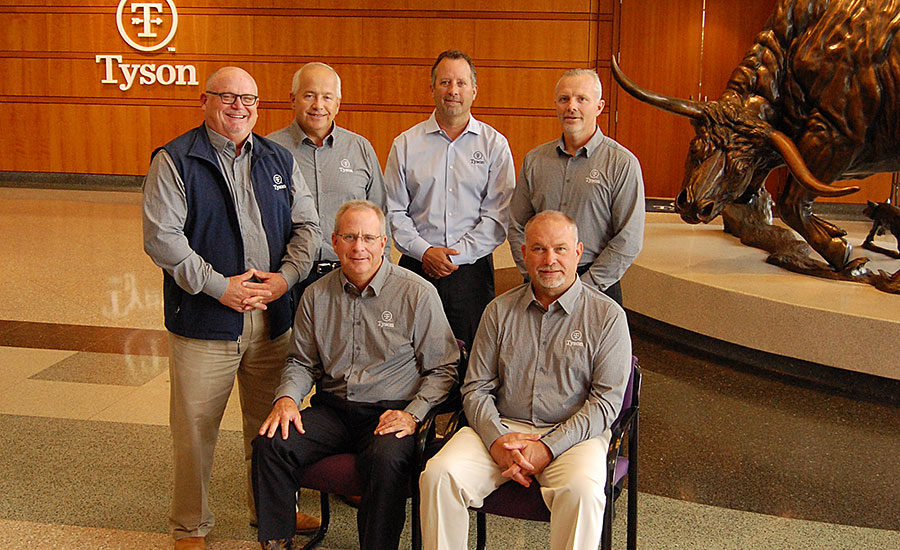



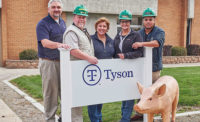
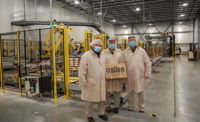
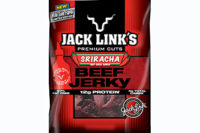

Report Abusive Comment